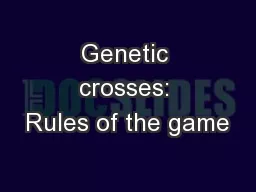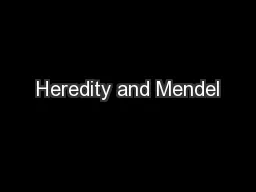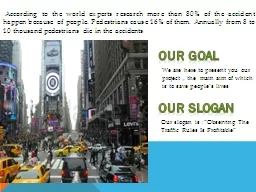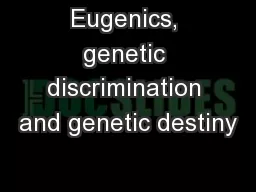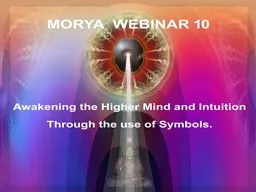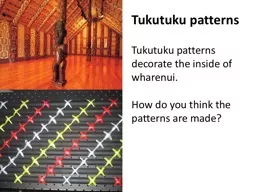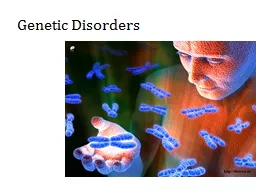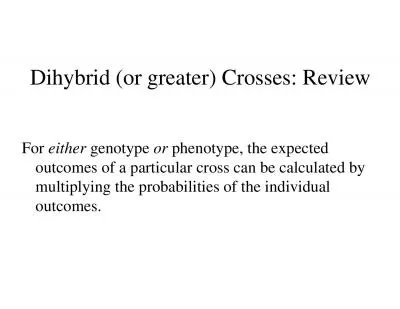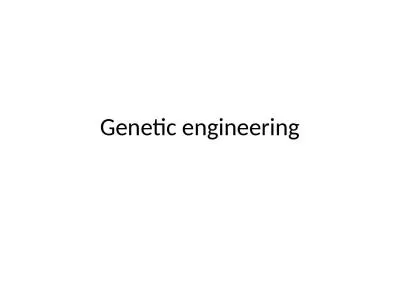PPT-Genetic crosses: Rules of the game
Author : lois-ondreau | Published Date : 2017-04-12
Making melanin pigment The TYR gene is just one of many genes on the human number11 chromosome The TYR gene encodes a protein that functions as the enzyme tyrosinase
Presentation Embed Code
Download Presentation
Download Presentation The PPT/PDF document "Genetic crosses: Rules of the game" is the property of its rightful owner. Permission is granted to download and print the materials on this website for personal, non-commercial use only, and to display it on your personal computer provided you do not modify the materials and that you retain all copyright notices contained in the materials. By downloading content from our website, you accept the terms of this agreement.
Genetic crosses: Rules of the game: Transcript
Download Rules Of Document
"Genetic crosses: Rules of the game"The content belongs to its owner. You may download and print it for personal use, without modification, and keep all copyright notices. By downloading, you agree to these terms.
Related Documents

